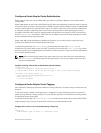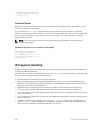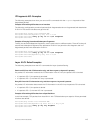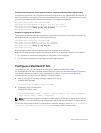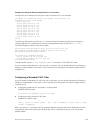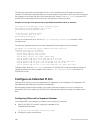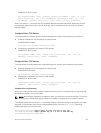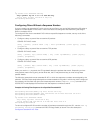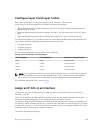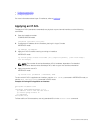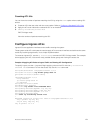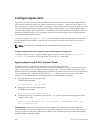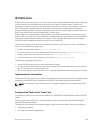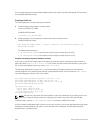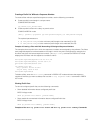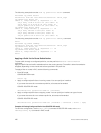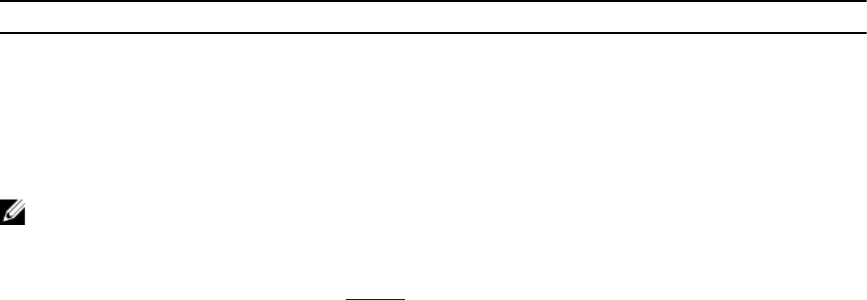
Configure Layer 2 and Layer 3 ACLs
Both Layer 2 and Layer 3 ACLs may be configured on an interface in Layer 2 mode.
If both L2 and L3 ACLs are applied to an interface, the following rules apply:
• When Dell Networking OS routes the packets, only the L3 ACL governs them because they are not
filtered against an L2 ACL.
• When Dell Networking OS switches the packets, first the L3 ACL filters them, then the L2 ACL filters
them.
• When Dell Networking OS switches the packets, the egress L3 ACL does not filter the packet.
For the following features, if you enable counters on rules that have already been configured and a new
rule is either inserted or prepended, all the existing counters are reset:
• L2 ingress access list
• L3 egress access list
• L2 egress access list
If a rule is simply appended, existing counters are not affected.
Table 6. L2 and L3 Filtering on Switched Packets
L2 ACL Behavior L3 ACL Behavior Decision on Targeted Traffic
Deny Deny L3 ACL denies.
Deny Permit L3 ACL permits.
Permit Deny L3 ACL denies.
Permit Permit L3 ACL permits.
NOTE: If you configure an interface as a vlan-stack access port, only the L2 ACL filters the packets.
The L3 ACL applied to such a port does not affect traffic. That is, existing rules for other features
(such as trace-list, policy-based routing [PBR], and QoS) are applied to the permitted traffic.
For information about MAC ACLs, refer to Layer 2.
Assign an IP ACL to an Interface
To pass traffic through a configured IP ACL, assign that ACL to a physical interface, a port channel
interface, or a VLAN.
The IP ACL is applied to all traffic entering a physical or port channel interface and the traffic is either
forwarded or dropped depending on the criteria and actions specified in the ACL.
The same ACL may be applied to different interfaces and that changes its functionality. For example, you
can take ACL “ABCD” and apply it using the in keyword and it becomes an ingress access list. If you apply
the same ACL using the
out keyword, it becomes an egress access list. If you apply the same ACL to the
Loopback interface, it becomes a Loopback access list.
This section describes the following:
Access Control Lists (ACLs)
119



